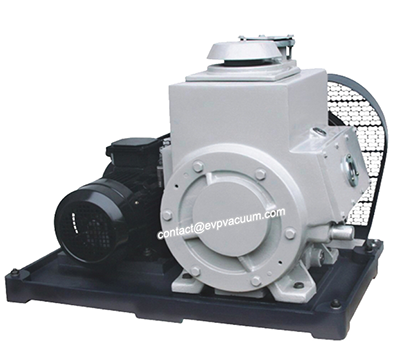Reciprocating vacuum pump
The main principle of reciprocating vacuum pump in the process of operation is to rely on the piston in the cylinder for reciprocating motion to suction or discharge gas, which can be divided into horizontal and vertical types during operation. But commonly used is the horizontal piston vacuum pump, the piston vacuum pump has the single cylinder and the double cylinder. The structure of the exhaust valve has slide valve type and free valve type.
Reciprocating vacuum pump features:
Not afraid of water vapor, firm, easy to operate, etc. It is mainly used to extract air or other gases from closed containers or reaction kettles. Unless special measures are taken, the general reciprocating vacuum pump is not suitable to extract corrosive gases or gases with particulate ash.
Reciprocating vacuum pump must be equipped with accessories:
(1) When dust is contained in the extracted gas, a shuttlecock must be installed before the air intake pipe;
(2) When there is a large amount of steam in the extracted gas, a condenser must be installed before the intake pipe.
(3) When the extracted gas contains corrosive gas, neutralization device must be installed before entering the vacuum pump;
(4) When the temperature of the extracted gas exceeds 35 ℃. Install cooling device;
(5) When there is a large amount of liquid in the extracted gas, a separator must be installed in front of the intake pipe;
(6) The starting current of the pump is often several times higher than the rated current of the motor, so it must be equipped with a corresponding starting switch.

Reciprocating vacuum pump principle:
The structure and pressure reducing principle of reciprocating vacuum pump the structure and action principle of reciprocating vacuum pump are basically the same as that of reciprocating compressor.
1. Similarities
In the same way, they all compress the low-pressure gas to increase the pressure.
2. Differences
The difference is that the former is to extract the thin gas from the container and compress it to more than one atmospheric pressure before discharging; the latter is to compress the atmospheric pressure gas to a higher pressure before discharging.
3. difference
In addition, they also have differences in the structure of valve train, i.e. intake valve and exhaust valve.
Reciprocating compressor generally adopts spring valve, while reciprocating vacuum pump mostly adopts slide valve type valve distribution mechanism.
(The article comes from the Internet. If reprinting is not allowed, please contact our company to delete it.)
